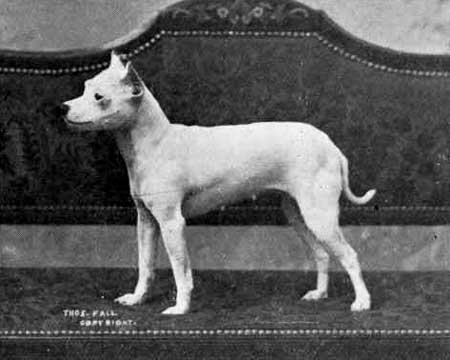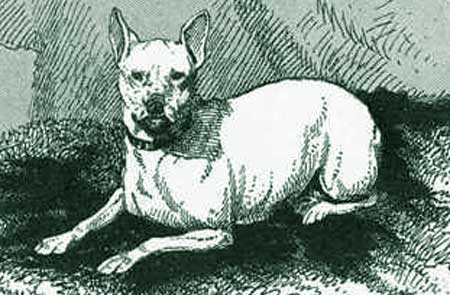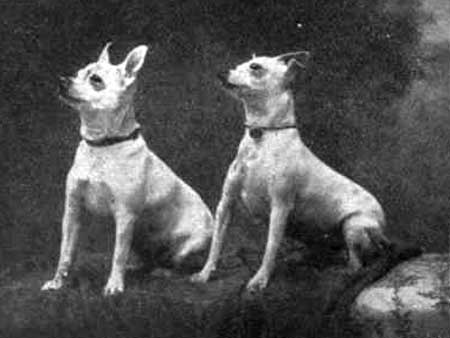
These two Victorian photographs are of the Toy Bull Terrier, and the drawing at the bottom is of Lily who belonged to Charles Henry Lane. Lily and her lineage were described as no less fearless than their full-sized bull terrier counterpart, apt to challenge an antagonist that far outweighed them in size and strength. But they had moleras that did not always fully close, believed at the time to be due to the excess roundness of the head.
An extinct dog breed that was once very popular in England, the toy bull terrier was related to the English white terrier, also extinct for pretty much the same reasons of health problems. The last known record of the Toy Bull was in 1894.
They were related to "black-and-tan terriers," which looks exactly like a Manchester terrier but smaller, and like the Toy Bull and English White were the result of cross-breeding whippets or Italian greyhounds to terriers. The black-and-tans were healthier animals because some of the health issues were related to the same gene that produced the whitest furs.
They frequently looked just like the modern chihuahua, and even today's Manchester terrier can often look like a tri-point chihuahua. The two toy bull terriers shown topmost on this page could very easily be taken to be chihuahuas.
There is every reason to believe the Toy Bull was outcrossed with the earliest imported chihuahuas that arrived in England and Scotland from America, when it was not yet a recognized show breed, but was thought the possible solution to the frail health issues of the Toy Bull and the English White. It was no solution, as it turned out, but the crosses may be the source of some of the health issues that still affllict chihuahuas.
The Toy Bull Terrier and the English White typically weighed six pounds, smaller than was the chihuahua in Victorian times. Some believe that the open molera and rounding of the head that eventually became the modern applehead chihuahua, which is long predated by the deerhead chi.
The English white terrier and the Toy bull terrier were popular breeds and a good ratters, though not often used for such work because of their fragility. Both breeds became associated with deafness, so that the public lost interest in them and breeders stopped producing them.



|

